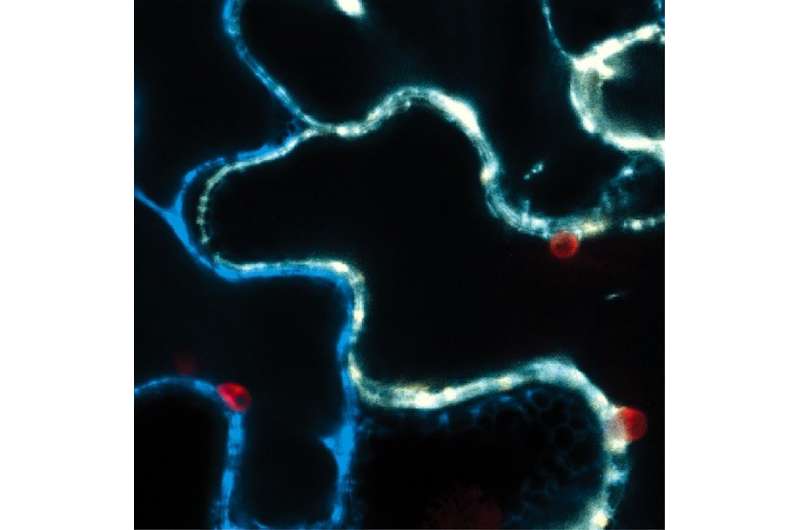Keeping up with lipids on the move—a new molecular tracking method

In one of the older Star Wars movies, Jedi master Yoda instructs his apprentice, Luke, on the ways of the Force in a series of now-iconic scenes. The Force, Yoda says, is an energy field that penetrates us, that surrounds us, that binds us.
One could say the same about expand iconlipids, small molecules in fats, oils, and waxes found in living things.
Lipids are found in a lot of places and do many things. They make up the boundaries of our cells, from which our tissues and organs are formed. They make up membranes that let plants do photosynthesis. Lipids are also great at storing energy, one reason researchers are targeting them to produce biofuels.
Scientists want to work with lipids to improve crop yields or make those biofuels. First, they are exploring how different types of lipids are made. But this research is tricky. Different parts of plant cells contribute to the process, so lipids are always moving in those cells. That makes it hard to keep track of them.
A new study from the Benning lab at the MSU-DOE Plant Research Laboratory presents a minimally-invasive lipid tracking method. The lab also tests the method on lipids related to photosynthesis in plants to explore where they are made in the plant cell. The study is published in The Plant Journal.
Lipid tagging and tracking system
"Most lipid precursors come from two sources in plant cells, the
expand iconendoplasmic reticulum and the expand iconchloroplast," explains Anna Hurlock. Anna is a former grad student in the Benning lab.
"But we don't know how much each source contributes to the final product. We don't know how lipid precursors move around," says Anna.
Current methods to track lipids can be problematic. They involve attaching a fluorescent molecule, about the same size as a lipid, to that lipid.
But this method causes lipids to act strangely, which can cast doubts on any findings.
The new approach is subtler.
Scientists take a lipid-editing protein (delta-6 desaturase) from a moss and insert it into a plant that doesn't have it.
"The foreign protein creates lipids we don't tend to see in the plant," Anna says. "Lipids are cobbled together with different building blocks, called expand iconfatty acids. That foreign protein creates new types of fatty acids, slightly different from the ones the plants make. These new building blocks mix in with the usual ones we expect to find."
"We can detect and track these unusual lipids as they move in the cell. Their unique make-up is the tell-tale," Anna adds.
Testing out the method, the team observed new subtleties with regards to lipid production. "For example, we thought that one lipid, PG, is nearly all made in the chloroplast. With the new method, we saw that about 18% of the precursors are from the endoplasmic reticulum."
There is a rub, however. The approach relies on genetic changes to the plant so it can take in the foreign protein. The plant doesn't seem to mind low levels of the new lipids. But it might not like it if there are a lot more of them, which could alter its natural lipid metabolism.
"Still, we've shown that this approach is highly informative," Anna adds. "It could help fill our knowledge gaps of lipid movement, especially if we can replicate it in wild plants."
Despite this advance, the movement of lipids in plants is still a mystery, much like the mythical Force. It's definitely worth exploring.
More information: Anna K. Hurlock et al. In Vivo Lipid "Tag and Track" Approach Shows Acyl Editing of Plastid Lipids and Chloroplast Import of Phosphatidylglycerol Precursors in Arabidopsis thaliana, The Plant Journal (2018). DOI: 10.1111/tpj.13999
Journal information: The Plant Journal
Provided by Michigan State University




















